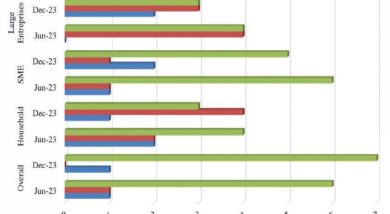Malawi’s power woes continue
 Malawi’s power supply remains erratic and inadequate to support a vibrant industry.
Malawi’s power supply remains erratic and inadequate to support a vibrant industry.
Consumers and businesses, in general, are still feeling the pinch of intermittent power supply affecting their household and business operations, respectively.
In the 2012/13 budget, Minister of Finance Dr. Ken Lipenga noted that increased investment in the power sector is essential to promote economic development in Malawi.
“Inadequate power is consistently identified as a key constraint and barrier to economic growth in Malawi. The lack of reliable power significantly lowers social returns and deters new investment in manufacturing, mining and other productive sectors,” he said.
Lipenga further said the lack of rural power additionally accelerates deforestation which has an impact on the availability and quality of water resources.
In the year, government undertook reforms in the energy sector, which the minister said were needed to create a conducive environment for scaling up capacity.
In line with this objective, government increased electricity tariffs by 63.52 percent so that revenues in the sector are closer to covering the costs of production.
Government argued that the measure was a move towards a more market determined tariff structure in the electricity sector.
“It is our intention to have a pricing structure that reflects the long run average cost of producing electricity in order to allow the private sector to invest in further generation capacity,” said Lipenga.
But have the reforms been any better to Malawians.
Consumers Association of Malawi (Cama) executive director John Kapito said the increase in electricity tariffs have not done any good to consumers.
“Prices of goods and services have drastically gone up, and the increase in electricity tariffs has compounded the problems. As consumers, we thought the increase in tariffs will result in better service provision, but that is not the case,” he said.
A businessperson from Blantyre’s populous township of Ndirande, Louis Chabwera, is one of the casualties of power shortages.
He told Business News last week that he is failing to take off his screen printing business because of intermittent power supply.
Chabwera fears that with frequent power outages, the machine will not operate to full capacity and can also be destroyed by unannounced power outages.
“I have a machine that is just lying idle at home. I cannot operate it because our power is not reliable,” he said.
Malawi’s total installed generated capacity is less than 300 megawatts with formal demand closer to 400 megawatts. Demand is projected to jump to around 700 megawatts by 2020.
Ninety-eight percent of the country’s hydro power is generated from the Shire River.
The statistics demonstrate the need for Malawi to make progress on improving power supply.
Government is, however, pinning its hopes on Kapichira Hydro Power Plant in Chikhwawa which is expected to add 64 megawatts to the national grid.
Already, the addition to the power grid has excited uranium miner, Paladin Africa Limited, which announced plans for its Kayelekera Uranium Mine in Karonga to be connected to the grid in September 2013.
Mining activities are gaining ground in Malawi; hence, the need for more power to make the industry more vibrant.
Over the years, there has been limited private sector investment in power because electricity tariffs have been set too low.
Experts believe the adjustment of electricity tariffs to full cost-recovery levels will generate the resources to pay for inter-connection with the Mozambique grid and also create incentives for private sector investment in power generation and distribution.
In the medium to long term, the Malawi Government is banking its hopes on the $350 million Millennium Challenge Corporation (MCC).
But mid this year, the Malawi Institution of Engineers (MIE), in a statement after the budget, was passed noted that the 2012/13 budget offered no solution to intermittent power supply during its lifespan.
The engineers’ body observed that the Mozambique Interconnector project cannot be an immediate solution to the country’s power woes.
“This is, in fact, a medium term salutation because it would take anything between 18 and 36 months or longer from implementation time to going live before the benefits of the interconnector can be realised,” said the MIE.
On MCC, the MIE said the project is targeting boosting efficiency and reliability of transmission and distribution systems while the major solutions required for the rampant electricity blackouts is to increase generation capacity.
“MCC will only add six megawatts of additional generation capacity which is an insignificant amount considering that currently the shortfall is in the order of 100 megawatts,” said MIE.
Consumers and the private sector all agree that power is vital for industrial production and economic development as a whole.




